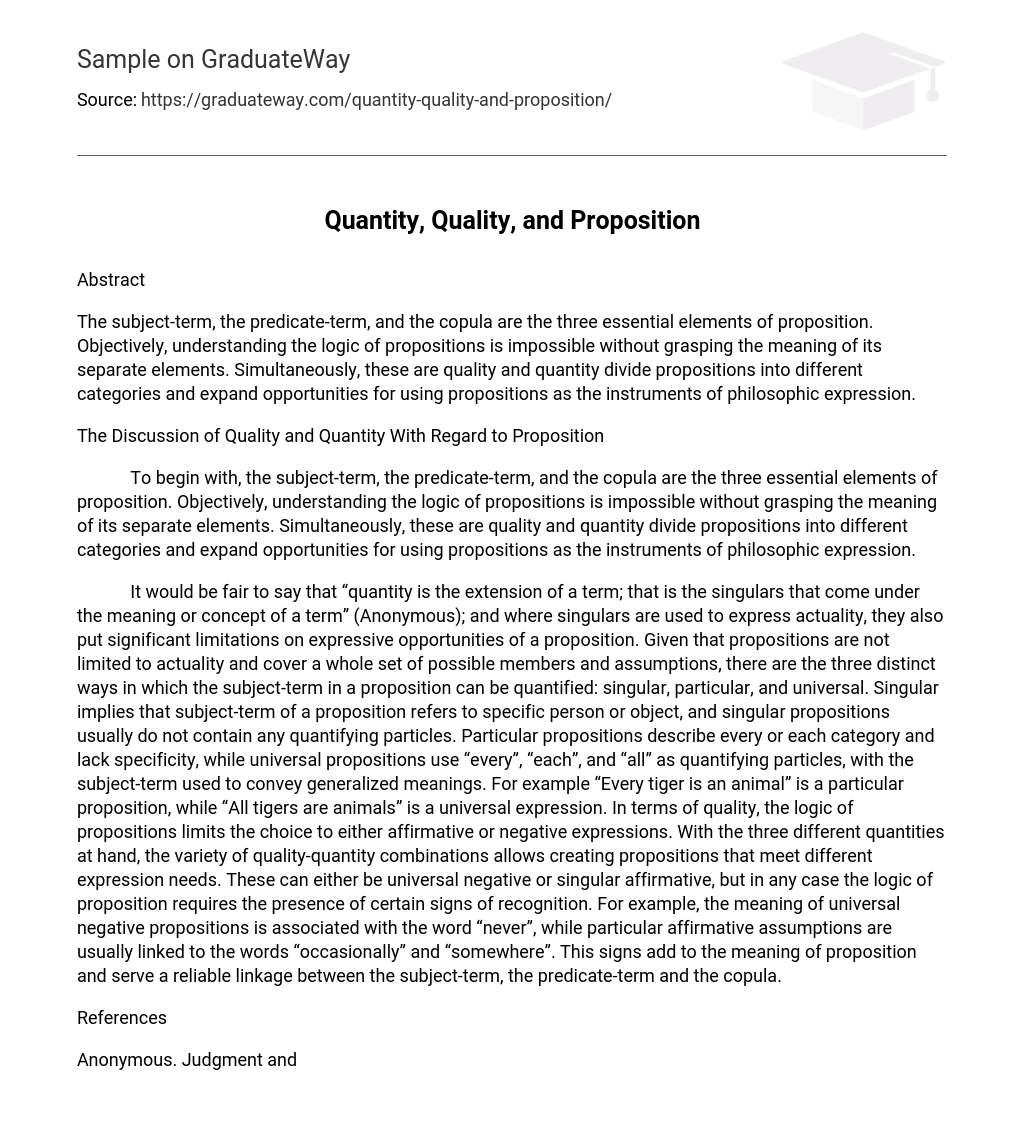Abstract
The subject-term, the predicate-term, and the copula are the three essential elements of proposition. Objectively, understanding the logic of propositions is impossible without grasping the meaning of its separate elements. Simultaneously, these are quality and quantity divide propositions into different categories and expand opportunities for using propositions as the instruments of philosophic expression.
The Discussion of Quality and Quantity With Regard to Proposition
To begin with, the subject-term, the predicate-term, and the copula are the three essential elements of proposition. Objectively, understanding the logic of propositions is impossible without grasping the meaning of its separate elements. Simultaneously, these are quality and quantity divide propositions into different categories and expand opportunities for using propositions as the instruments of philosophic expression.
It would be fair to say that “quantity is the extension of a term; that is the singulars that come under the meaning or concept of a term” (Anonymous); and where singulars are used to express actuality, they also put significant limitations on expressive opportunities of a proposition. Given that propositions are not limited to actuality and cover a whole set of possible members and assumptions, there are the three distinct ways in which the subject-term in a proposition can be quantified: singular, particular, and universal. Singular implies that subject-term of a proposition refers to specific person or object, and singular propositions usually do not contain any quantifying particles. Particular propositions describe every or each category and lack specificity, while universal propositions use “every”, “each”, and “all” as quantifying particles, with the subject-term used to convey generalized meanings. For example “Every tiger is an animal” is a particular proposition, while “All tigers are animals” is a universal expression. In terms of quality, the logic of propositions limits the choice to either affirmative or negative expressions. With the three different quantities at hand, the variety of quality-quantity combinations allows creating propositions that meet different expression needs. These can either be universal negative or singular affirmative, but in any case the logic of proposition requires the presence of certain signs of recognition. For example, the meaning of universal negative propositions is associated with the word “never”, while particular affirmative assumptions are usually linked to the words “occasionally” and “somewhere”. This signs add to the meaning of proposition and serve a reliable linkage between the subject-term, the predicate-term and the copula.
References
Anonymous. Judgment and Proposition.





